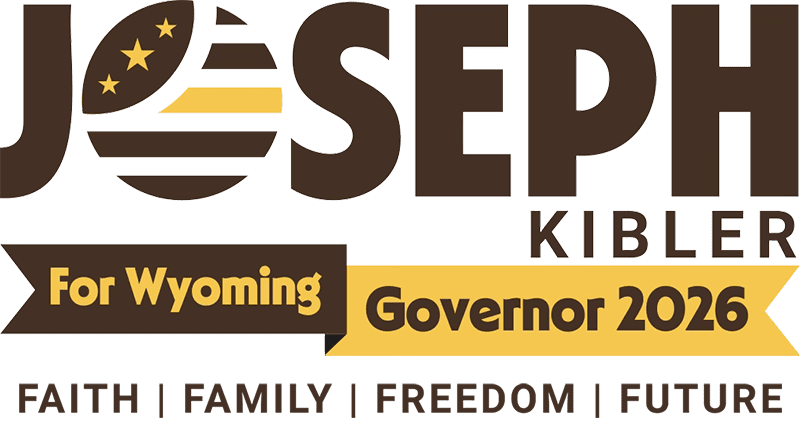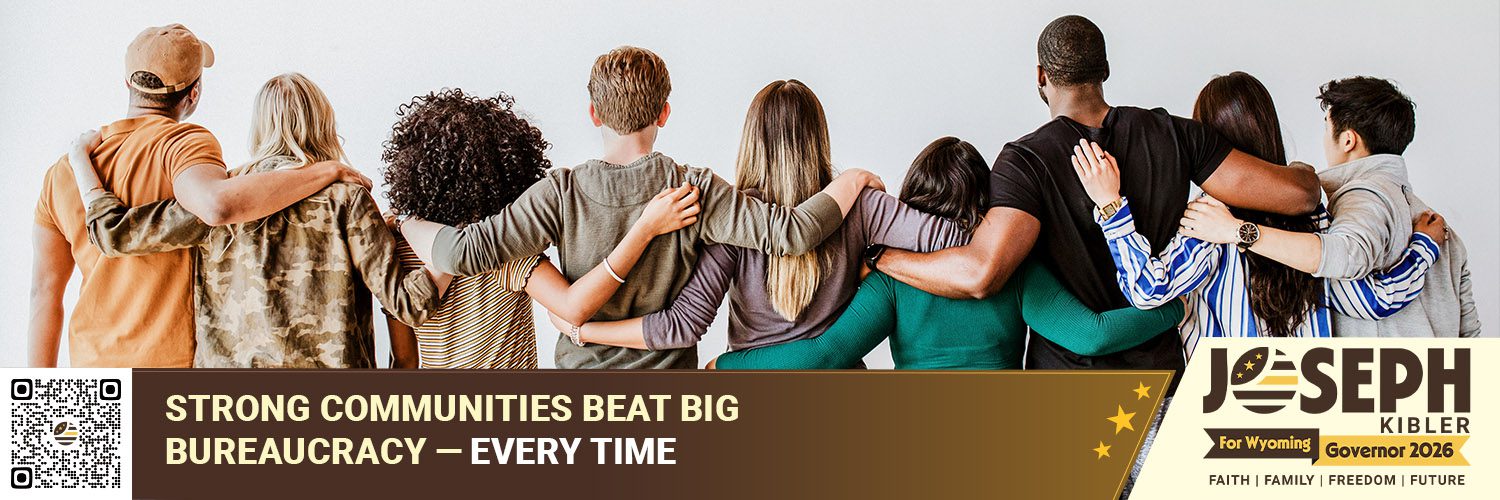Wyoming’s strongest asset isn’t in a building—it’s in our people. When a culvert washes out, a family needs help, or Main Street needs a boost, neighbors don’t wait for a stack of forms. They roll up their sleeves and solve it. Government should clear the path and publish the results, not stand in the way.
This is how we Be Something Different: trust local problem-solvers, keep the rules light, and share what works so others can copy it.
1) Local first, simple always
Solutions last when they are built closest to the problem.
- Local control where it belongs: town councils, county crews, volunteer groups, and faith-based partners know the terrain and the people.
- One-page guidance, not binders: post plain-English how-tos for common community fixes—trail repairs, small bridge maintenance, downtown cleanups, seasonal shelters—so groups can act quickly and safely.
2) Red tape out of the way
Time is the scarcest resource for small towns and volunteers.
- Permit shortcuts for low-risk work: pre-approved templates and checklists for routine repairs and beautification projects.
- Consolidated forms: if two agencies ask for the same info, submit once and reference it everywhere.
- Predictable windows: publish contact hours and target timelines during busy seasons so folks can plan around haying, calving, and winter.
3) Micro-grants that feel like a handshake
When a small amount catalyzes a big result, keep it light.
- Micro-grants under a simple cap for tools, materials, and safety gear—paid on receipts, with a photo and a two-sentence summary when it’s done.
- Match matters: prioritize projects with local dollars or sweat equity on the table.
- No sprawl: this is not a new agency; it’s a tiny spark for efforts communities are already leading.
4) Faith and civic partners welcomed
Churches, VFW halls, 4-H, FFA, youth sports, and service clubs already carry Wyoming.
- Open doors, clear lanes: allow partnerships for food drives, seasonal shelters, and youth programs with simple MOUs and safety standards.
- Respect for autonomy: government supports—doesn’t steer—mission and service.
5) Main Street momentum
Small businesses keep towns alive.
- Storefront quick wins: streamlined approvals for facade fixes, signage, accessible entries, and outdoor seating—clear rules, fast answers.
- Pop-up permissions: short-term, low-fee permits for markets and events that bring people downtown, with simple clean-up commitments.
6) Results you can see (and copy)
Sunlight and sharing make local wins travel.
- Two-minute snapshots: a photo, a short description, and a “before/after” note posted on a public map—so other towns can copy-paste the idea.
- Simple measures: dollars spent, hours volunteered, days to complete. Enough to learn, not enough to bog down.
7) Respect rural reality
Most Wyoming communities run on a few staff and a lot of heart.
- Shared tool libraries & mobile crews: county-to-town lending of specialty equipment and short stints from regional crews for tasks small towns can’t staff alone.
- Season-smart scheduling: align state assistance windows with ag, hunting, and winter calendars so help arrives when people can actually use it.
Why this matters
- Families: cleaner, safer neighborhoods, quicker fixes, and more life on Main Street.
- Volunteers & faith groups: less paperwork, more doing.
- Local businesses: visible improvements, more foot traffic, and a government culture that says yes to common-sense projects.
Strong communities beat big bureaucracy because neighbors know what needs doing—and how to do it right. Let’s clear the path and let Wyoming shine.
Be Something Different: trust people, keep it lean, and celebrate results everyone can see.
FAQs
Q1: Is this creating new offices or programs?
No. This approach organizes what exists, trims duplicate steps, and uses small, time-limited micro-grants only when they unlock local effort.
Q2: How do we prevent red tape from creeping back in?
With one-page rules, posted timelines, and shared templates—and by measuring only what teaches others how to repeat a win.
Q3: What about safety and liability?
Low-risk templates and checklists set basic standards; higher-risk work follows existing codes. The point is clarity, not shortcuts.
Q4: How do rural towns without staff participate?
Through shared tools, mobile crews, and pre-approved templates that save time. Small teams get predictable help when it counts.
Q5: How will we know it’s working?
Two-minute snapshots—before/after photos, days to complete, dollars and volunteer hours—posted on a simple public map so success is visible and repeatable.

